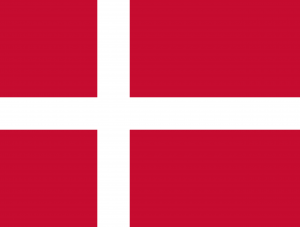Difference between revisions of "Language/Danish/Vocabulary/Nature-and-Environment"
m (Quick edit) |
m (Quick edit) |
||
| Line 2: | Line 2: | ||
{{Danish-Page-Top}} | {{Danish-Page-Top}} | ||
<div class="pg_page_title">Danish Vocabulary | <div class="pg_page_title">[[Language/Danish|Danish]] → [[Language/Danish/Vocabulary|Vocabulary]] → Nature and Environment</div> | ||
__TOC__ | __TOC__ | ||
| Line 234: | Line 234: | ||
|title=Danish Vocabulary → Advanced Vocabulary | |title=Danish Vocabulary → Advanced Vocabulary | ||
| Line 255: | Line 255: | ||
{{Danish-Page-Bottom}} | {{Danish-Page-Bottom}} | ||
<span maj></span> <span gpt></span> <span model=gpt-3.5-turbo></span> | |||
Revision as of 21:15, 18 March 2023
Introduction
In this lesson, we will learn advanced Danish vocabulary related to nature, environment, and climate. Denmark is known for its beautiful natural landscapes, including coastlines, forests, and lakes. Danish people have a great appreciation for nature and many enjoy outdoor activities such as hiking, cycling, and swimming. Understanding the Danish vocabulary related to nature is not only useful for communicating with native speakers but also for exploring the natural beauty of Denmark.
Plants and Trees
Denmark is known for its lush greenery, and the Danish language has many words related to plants and trees. Here are some advanced vocabulary words related to this topic:
| Danish | Pronunciation | English Translation |
|---|---|---|
| Bøgetræ | ['bø:ətʁɛ:] | Beech tree |
| Fyrretræ | [ˈfyɐ̯.ətʁɛ:] | Pine tree |
| Æbletræ | ['ɛ:blətʁæ:] | Apple tree |
| Bjørneklo | ['bjɶʁnəkloʊ̯] | Hogweed |
| Græs | [gʁɛ:s] | Grass |
| Brombær | ['bʁɔmˌbæɜ] | Blackberry |
| Flower | ['flovər] | Flower |
| Blomstrende | ['blɔmst͡ʁɛndə] | Flowering |
| Skov | [skɔv] | Forest |
| Hæk | [hɛk] | Hedge |
| Hækklipper | ['hɛkˌklipər] | Hedge trimmer |
Some common phrases related to plants and trees:
- Træet taber blade i efteråret. (The tree loses its leaves in autumn.)
- Hækken er blevet for høj. (The hedge has become too tall.)
- Blomsterne i haven er særligt smukke i juni måned. (The flowers in the garden are especially beautiful in June.)
- Brombærrene er modne i august. (The blackberries are ripe in August.)
Animals
Denmark has a diverse range of wild and domesticated animals. Some of the most common animals in Denmark include deer, rabbits, squirrels, foxes, and badgers. Here are some advanced Danish vocabulary words related to animals:
| Danish | Pronunciation | English Translation |
|---|---|---|
| Hare | [ˈhɑːrə] | Hare |
| Ræv | [ʁɛːv] | Fox |
| Rådyr | [ˈʁɔˌdyr] | Roe deer |
| Bjørn | [bjœɐ̯n] | Bear |
| Bæver | [ˈbɛːvɐ] | Beaver |
| Rødhals | [ˈʁøˌhɑls] | Robin |
| Regnorm | [ˈʁejˌnɔrm] | Earthworm |
| Humlebi | [Humen. Li] | Bumblebee |
| Larve | ['læʊvə] | Caterpillar |
| Flagermus | ['flagərmus] | Bat |
Here are some common phrases related to animals:
- Jeg så en ræv i skoven i går. (I saw a fox in the forest yesterday.)
- Bæveren gnasker træer ned ved åen. (The beaver is gnawing trees down by the river.)
- Rødhalsen synger en smuk melodi i haven. (The robin is singing a beautiful melody in the garden.)
- Humlebierne flyver rundt i blomsterbedene. (The bumblebees are flying around in the flower beds.)
Environment and Climate
Denmark is known for being a green country with a strong focus on sustainability and renewable energy. Therefore, it is important to learn the Danish vocabulary related to environmental issues and climate change. Here are some advanced vocabulary words related to this topic:
| Danish | Pronunciation | English Translation |
|---|---|---|
| Genanvendelse | [jɛnɑnˈvɛndəl̩ə] | Recycling |
| Vindmølle | [vinˈmølə] | Wind turbine |
| Klimaændringer | [klɪˈmaændrɪŋər] | Climate change |
| Fossilt brændstof | [ˈfɔsl̩d ˈbʁɛnstof] | Fossil fuel |
| Global opvarmning | [gloˈbal opˈvɑrmnɪŋ] | Global warming |
| Luftforurening | [lʌftˌfɔɐ̯ʊˈʁʌnɪŋ] | Air pollution |
| Greenpeace | ['gri:npis] | Greenpeace |
| Bæredygtighed | [ˌbæɐ̯ədyːˈkʰi] | Sustainability |
| Brændstofeffektivitet | [ˈbʁɛnʃtɔ̝wn ˌeffeˈktʰivi.tɛt] | Fuel efficiency |
| Solcelle | [ˈsɒlsɛlə] | Solar cell |
Here are some common phrases related to the environment and climate:
- Vi skal øge genanvendelsen for at mindske vores affaldsmængde. (We need to increase recycling to reduce our waste amount.)
- De nye vindmøller dækker 30% af byens energibehov. (The new wind turbines cover 30% of the city's energy needs.)
- Klimaændringerne har stor betydning for dyre- og planteliv. (Climate change has a great impact on animal and plant life.)
- Vores afhængighed af fossile brændstoffer skal mindskes for at reducere drivhusgasser. (Our dependence on fossil fuels must be reduced to decrease greenhouse gases.)
Conclusion
Learning the Danish vocabulary related to nature, environment, and climate is important for both communication and understanding Danish culture. By mastering this vocabulary, you can appreciate the natural beauty of Denmark and understand the country's strong focus on sustainability and renewable energy.
{{#seo: |title=Danish Vocabulary → Advanced Vocabulary
Related Lessons
- People in Danish
- Ordinal Numbers in Danish
- At the Store
- At the Post Office
- Greetings
- Quantity in Danish
- Time
- Things in Danish
- How to say Good Bye?
- Greetings and Introductions
